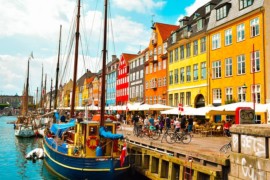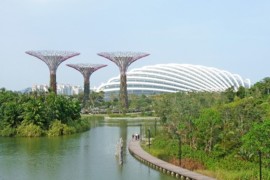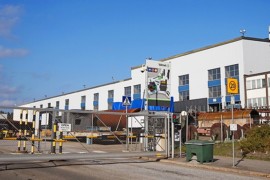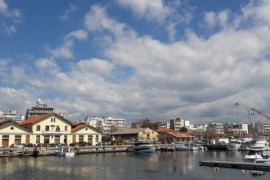After reviewing some district heating networks in France (Auxerre or Montpellier for example) and in Europe (Helsinki), DHC News takes you to the North of Europe, to Gothenburg, to discover a heating network powered primarily by energy from incineration of waste and refineries. A technological feat that spans 410 kilometres and supplies heating to 90% of collective housing in the area!
Gothenburg at a glance
A coastal town in southwestern Sweden, the city of Gothenburg covers 450 km2 and has 522,200 inhabitants, while its greater urban area counts more than 900 000 inhabitants. The second city of Sweden, after Stockholm, due to the importance of its demographic weight and its economic activity and industry, Gothenburg is also the fifth largest city in the Nordic countries (a group bringing together Denmark, Finland, Iceland, Norway and Sweden) and the largest city that is not a capital.
A heating network born in the 1950’s
In Gothenburg, the idea of providing heat to its people via a district heating network is not a new or recent idea. The development of its network has been in effect since the mid-1950s, whereas before this date, gas was mainly the raw material used.
The heating network in Gothenburg is under the responsibility of Göteberg Energi, an SA – separate from the City since 1980 but still belonging to the municipality – which is still the leading energy supplier in Western Sweden. Its construction has delivered undeniable results: since 1985, sulphur emissions have been reduced by 99% and those of nitrogen oxide by 89%.
A summary of Gothenburg’s heating network
The main features of the heating network in Gothenburg can be grouped into three essential pieces of information:
- Integrated within the Celsius Smart Cities program – a coordination of key influencers of major European cities, aimed at developing district heating – the Gothenburg heating network is interconnected. It connects the north and south of the region and extends over a length of 410 km, for a total of 1200 km of pipelines.
- With its 19 production sites distributed throughout the region, the heating network serves 90% of Gothenburg collective dwellings of the urban area and 20% of individual houses. It provides about 0.3 Mtoe of heat. The heat price delivered to Gothenburg is about 60 euros per MWh on average. In comparison, it is about 76 euros per MWh for heating networks in France, according to a survey by Amorce. It should be noted that the heat price is modulated according to four choices. These range from the rental of the exchanger (the choice made by most housing tenants) to purchasing it, with two intermediate options.
- The Gothenburg heating network uses half the heat recovered from the incineration of waste and refineries, as well as biofuels and heat pumps installed in wastewater. More than 80% of its energy mix comes therefore from renewable sources or energy recovery. An excellent example of using waste heat!
No more waste for the incineration plants?
Sweden truly is first class at recycling: only 1% of Swedish waste end up in garbage bins, against 38% of household waste from other European countries. However, this eco-consciousness has already provoked changes in the intake of the capital incineration plants: imported waste. Stockholm has already imported 800 000 tonnes of household waste, notably from Norway. Further evidence that the recovery of energy from waste is a growing sector.
An original initiative: a boat connected to the heating network
Since the beginning of 2015, the Gothenburg heating network has continued to innovate and prove, if further proof were needed, that the city remains at the forefront of heat distribution innovation. The Stena Danica – a 155-metre-long construction, which carries up to 550 passengers and 2274 cars a day between Gothenburg and Frederikshavn in Denmark – is indeed connected to the heating network at night. An astounding innovation, since this is the first time ever that a ferry has been connected to a district heating system.
This saves the boat from having to leave its engines idling and instead provides electricity for heating – a process consuming fuel and producing carbon dioxide. Such an idea, launched under the Celsius Smart Cities project, allows the city to save on approximately 500 tons per year of carbon dioxide emissions.
With its heating network powered primarily by energy recovered from the incineration process of waste and refineries, the city of Gothenburg shows that the northern European countries are still the reference points for heating networks and they continue to provide inspiration for the rest of the continent!
Image source: Flickr (Quique)







